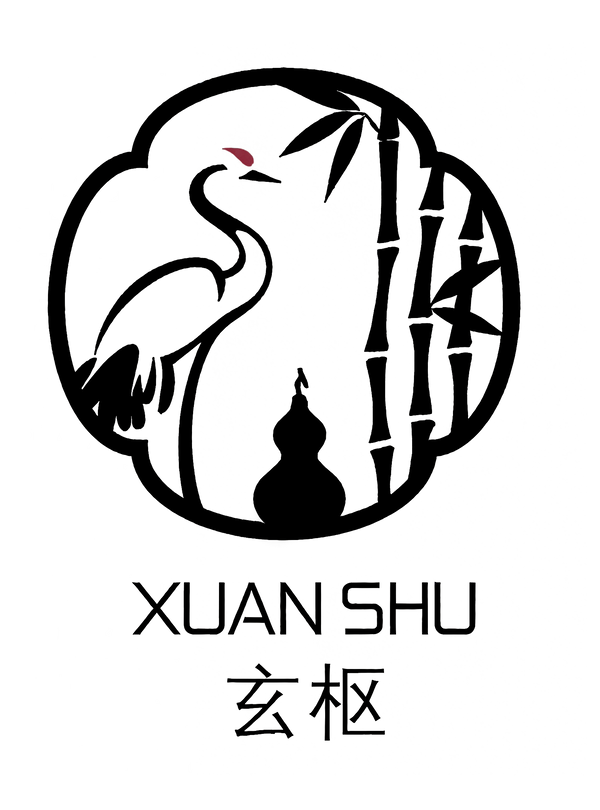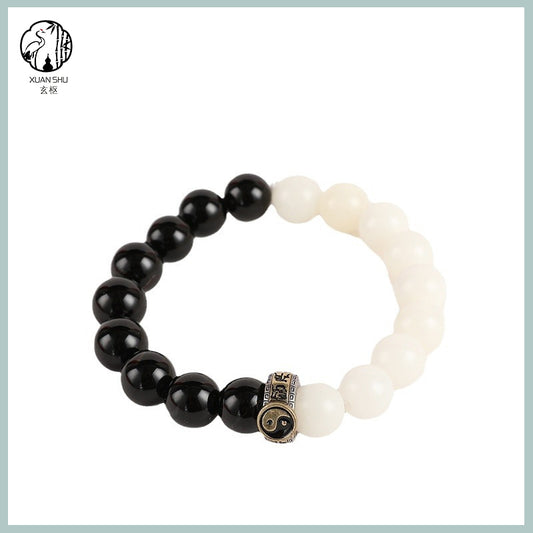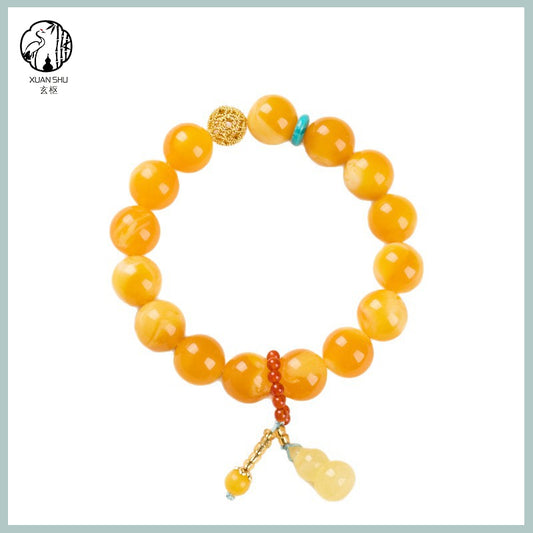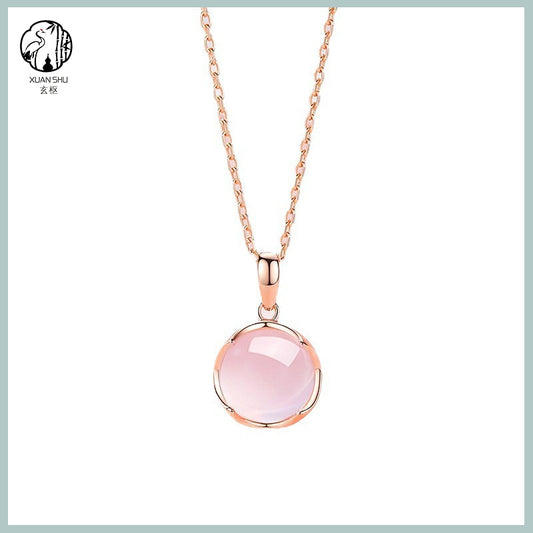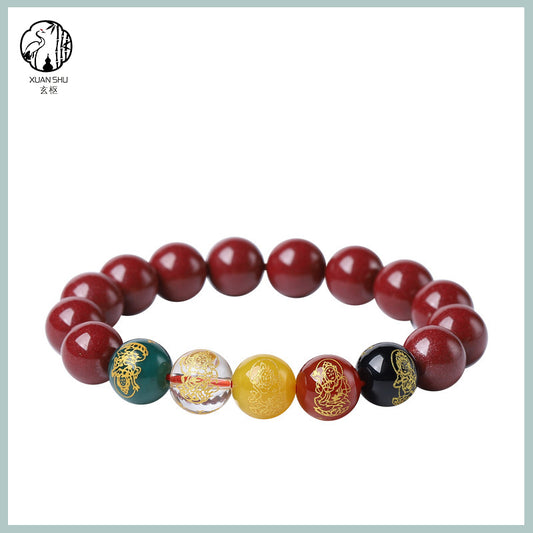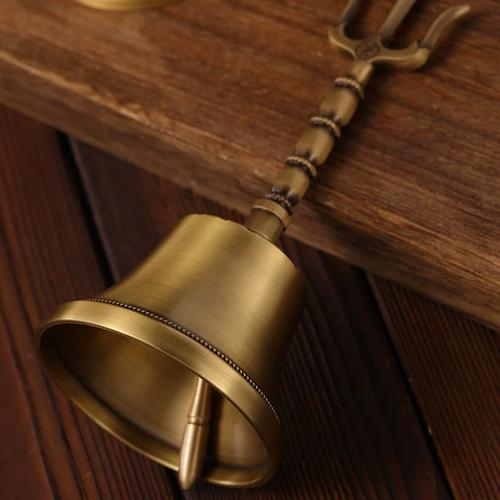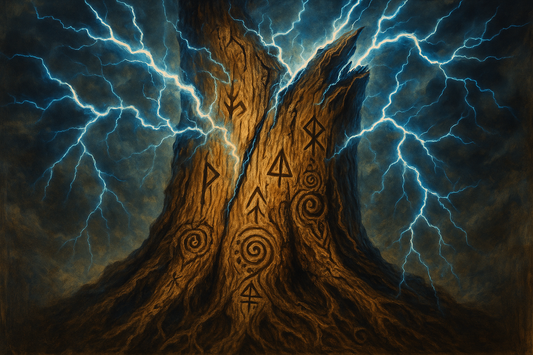What Does The Phoenix Symbolize In Chinese Culture?
In traditional Chinese culture, the phoenix is a highly symbolic mythical bird, representing auspiciousness, nobility, resilience, and harmony. Over thousands of years, its image has continuously evolved, yet its core meaning has always profoundly influenced the spiritual world of the Chinese people. From ancient mythology to modern culture, the phoenix is not only a symbol of good fortune, but also embodies the Chinese nation's pursuit of noble virtues and its longing for a peaceful and prosperous era.
A Symbol of Auspiciousness and Peace
As one of the most iconic symbols of good fortune in traditional Chinese culture, the phoenix has long been regarded as an omen of a prosperous and peaceful era. In the Book of Documents (Shangshu · Yiji), the phrase “when the music of Shao reaches its peak, the phoenix appears in harmony” vividly portrays how the phoenix would gracefully descend when a wise ruler governs with virtue—signifying the favor of Heaven. This sacred image led generations of rulers to view the appearance of the phoenix at sunrise (feng ming chao yang) as a sign of enlightened governance and the emergence of great talents, making it an important emblem in the political culture of traditional China.
In folk belief systems, the phoenix carries an even more festive connotation. Together with the dragon, it forms the classic motif of “dragon and phoenix bringing prosperity” (long feng cheng xiang), a perfect embodiment of the traditional Chinese philosophy of yin-yang harmony: the dragon symbolizes masculine strength (yang), while the phoenix represents feminine grace (yin), and the two complement each other perfectly. This iconic pairing is widely used in traditional wedding ceremonies—from embroidered garments to bridal chamber decorations—conveying heartfelt blessings for marital harmony and happiness. Even today, in modern Chinese-style weddings, dragon and phoenix motifs remain among the most beloved decorative themes, showcasing the enduring vitality of this cultural symbol and the timeless Chinese aspiration for a joyful and harmonious marriage.
Nirvana and Rebirth: The Phoenix's Immortal Vitality
In Chinese culture, the phoenix not only symbolizes auspiciousness and beauty but also embodies the eternal force of life itself. With the introduction of Buddhism, Chinese mythology gradually developed the moving legend of the "phoenix’s nirvana": it is said that every five hundred years, the phoenix gathers fragrant wood and sets itself ablaze, rising anew from the intense flames—its wings stronger, its song purer, its spirit more refined. This awe-inspiring image of rebirth was elevated by Guo Moruo in his famous poem The Phoenix’s Nirvana, where the majestic vision of the phoenix rising from fire became a powerful metaphor for the indomitable spirit of the Chinese nation—growing ever stronger through adversity.
This philosophy of "life through death" has deeply permeated the spiritual fabric of the Chinese people. From ancient times to the present, whenever faced with hardship and challenges, the image of the phoenix’s rebirth has stirred a profound inner resilience. It teaches us that true life is not about avoiding suffering, but about transcending it through its trials and forging a higher state of being. This spirit not only inspires individuals to maintain faith in times of hardship but also serves as a vital source of strength driving the entire nation forward—highlighting the enduring vitality and ever-renewing spirit of Chinese civilization.
An Embodiment of Virtue: Benevolence, Righteousness, Propriety, Wisdom, and Integrity
In traditional Chinese culture, the phoenix carries profound moral significance and has been imbued with noble spiritual qualities throughout generations of classical texts. The Classic of Mountains and Seas (Shan Hai Jing) records that “its head bears the mark of virtue, its wings the mark of righteousness,” linking the phoenix’s five-colored feathers to the Confucian core virtues known as the Five Constants—benevolence (ren), righteousness (yi), propriety (li), wisdom (zhi), and integrity (xin). This symbolic alignment elevates the phoenix beyond a mere mythical bird, transforming it into a vivid representation of the moral ideals of Chinese civilization. Through this unique cultural coding, the phoenix becomes a spiritual benchmark for evaluating one’s moral cultivation.
For scholars and poets, the phoenix has long served as a symbol of lofty aspirations and noble character. During the Warring States period, the poet Qu Yuan wrote in Li Sao: “I bid the phoenix to soar aloft, flying day and night,” using the image of the phoenix soaring through the heavens to express his unwavering integrity and refusal to conform to corruption. This cultural tradition, tempered and enriched over millennia, has become deeply embedded in the spiritual DNA of the Chinese people. Even today, the gentlemanly virtues symbolized by the phoenix continue to subtly shape Chinese values, serving as an enduring cultural emblem of moral excellence and reflecting the Chinese civilization’s unrelenting pursuit of ethical ideals.
Yin-Yang Harmony: A Philosophy of Balance and Unity
The gender symbolism of the phoenix in Chinese culture has undergone a profound and meaningful evolution. Originally, the divine bird was distinctly divided into feng (the male phoenix) and huang (the female phoenix). The Classic of Poetry (Shijing · Daya · Juan’a) famously depicts, “The phoenixes fly in pairs, their wings fluttering in unison,” using the graceful imagery of the two phoenixes flying side by side to symbolize a harmonious and blissful marriage. As Yin-Yang philosophy developed during the Han dynasty, the separate identities of feng and huang gradually merged into a single, unified image. This transformation marked a shift from the concrete to the abstract, and the phoenix evolved into a profound philosophical emblem of yin-yang harmony and cosmic balance between Heaven, Earth, and humanity.
This transformation reflects the deep-rooted Chinese cultural pursuit of harmony and beauty. The phoenix became more than a symbol of marital bliss—it was elevated to a messenger of universal harmony, representing not only familial peace but also the coordination of social order and the ideal of human coexistence with nature. This spirit of hehe (harmonious union) is one of the most essential values of Chinese civilization, and the phoenix stands as its most vivid cultural embodiment—continually nurturing the Chinese people's timeless yearning for a world of balanced and harmonious unity.
A Symbol of Power and Nobility
In the symbolic system of traditional Chinese politics, the phoenix forms a profoundly meaningful counterpart to the dragon. While the dragon, embodying masculine yang energy, was reserved exclusively for the emperor, the phoenix—with its elegant and auspicious image—became the emblem of the empress. This institutionalized distinction was fully developed by the Tang and Song dynasties. A quintessential example of this symbolism can be seen in the Ming dynasty’s court-crafted diancui fengguan (kingfisher-feathered phoenix crown), where artisans intricately inlaid hundreds of brilliant blue feathers to form a phoenix poised for flight. Adorned with radiant pearls and gemstones, these exquisite headdresses expressed the authority of imperial women through exceptional craftsmanship, making the phoenix a tangible symbol of female power within the royal court.
Beyond its political symbolism, the phoenix also holds a special place in the traditional system of talent recognition. During the Three Kingdoms period, the esteemed scholar Sima Hui (known as Master Water Mirror) famously referred to the strategist Pang Tong as a “young phoenix” (fengchu), a poetic epithet that suggested both his youthful promise and his destined greatness. Idioms such as “the phoenix sings at sunrise” (chaoyang mingfeng) liken the phoenix’s early morning cry to the presence of a virtuous and gifted individual, forming a unique metaphorical language in which the phoenix symbolizes talent. This dual significance—representing both supreme authority and exceptional ability—makes the phoenix one of the most dynamic and richly layered symbols in traditional Chinese culture.
The Phoenix in Daoism
In Daoist culture, the phoenix is endowed with unique religious significance, serving as a sacred messenger between Heaven and humanity. As one of the “Five Sacred Creatures” (wuling) in Daoism—alongside the Azure Dragon, White Tiger, Vermilion Bird, and Black Tortoise—the phoenix plays an integral role in the cosmic directional system. Daoist scripture Yunji Qiqian refers to it as the "Essence of the Vermilion Cave" (danxue zhi jing), a celestial bird that drinks sweet dew and feeds on jade-like branches, symbolizing the Daoist ideal of immortality. In the Daoist practice of cultivation, the phoenix also carries profound alchemical meaning: its dual-gender nature reflects the union of yin and yang in internal alchemy, while its rebirth through fire corresponds to the method of “refining the form with true fire” (zhenhuo lianxing).
Daoism views the appearance of the phoenix as an auspicious omen sent from Heaven. The Essential Explanation of the True Writings of the Supreme Cavern Mystery (Taishang Dongxuan Lingbao Zhenwen Yaojie) records that the phoenix’s arrival foretells the advent of a sage ruler and the flourishing of the Great Dao. In ritual practice, phoenix imagery is widely used in Daoist ceremonial instruments and objects—such as phoenix lamps and phoenix banners—which serve as sacred tools to facilitate communication between Heaven and Earth. This belief continues in contemporary Daoist temples. For example, the Phoenix Pool at Changchun Temple in Wuhan embodies the beautiful aspiration that “the phoenix sings and the Dao prospers” (feng ming dao chang). The phoenix’s multiple layers of symbolism in Daoism reflect both the essence of Daoist teachings—rebirth and harmony—and the unique spiritual power of sacred imagery in Chinese religious culture.
Conclusion
As one of the most magnificent mythical birds in Chinese culture, the phoenix has, for thousands of years, carried the Chinese people’s enduring pursuit of beauty, nobility, and harmony. It is both a symbol of auspicious prosperity and an embodiment of moral ideals; it represents the resilience of rebirth through fire and contains the wisdom of yin-yang balance. From ancient mythology to modern civilization, the image of the phoenix has continuously evolved, yet its spiritual essence remains unchanged—it symbolizes the Chinese nation’s faith in a brighter future, steadfast commitment to virtue, and reverence for the power of life.
Today, the phoenix continues to soar across the realms of art, literature, and everyday life, serving as a cultural bridge between tradition and modernity. With every beat of its wings, it tells the ongoing legend of Chinese civilization and conveys to the world the profound beauty of harmony that lies at the heart of Eastern philosophy.
